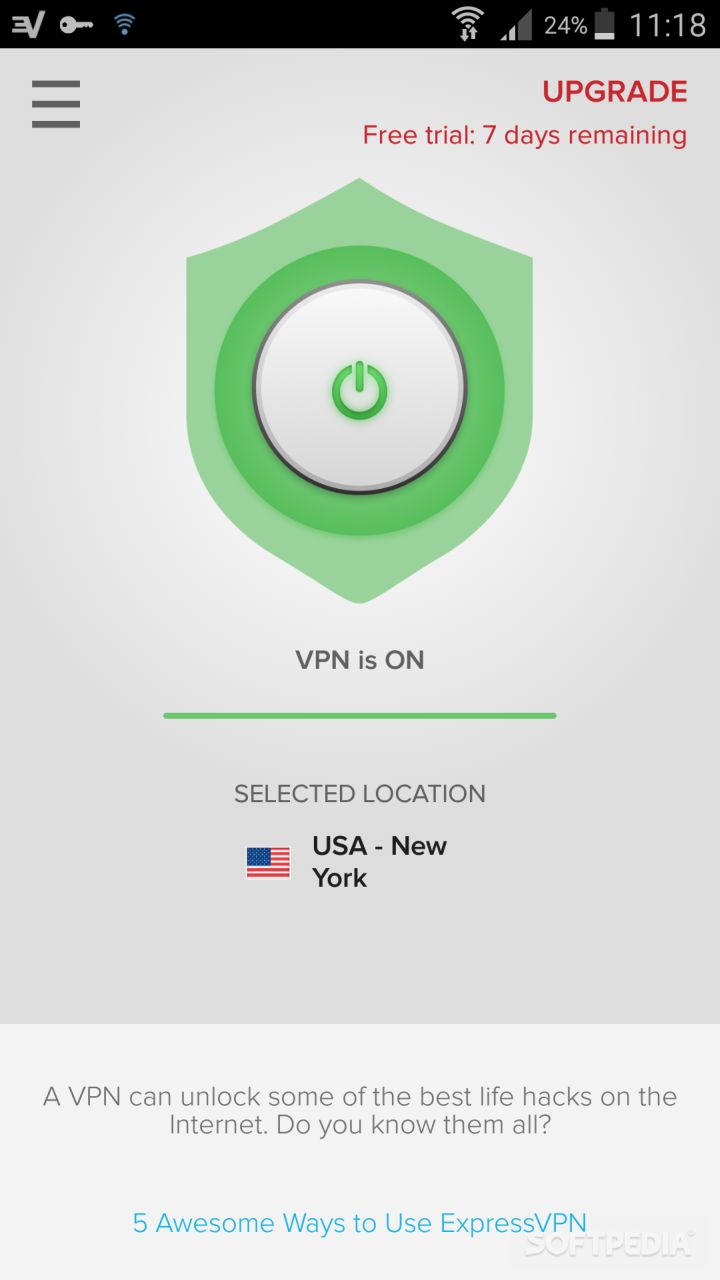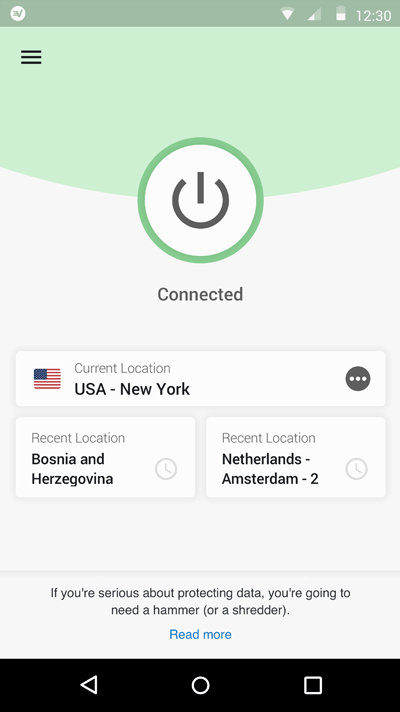
- Expressvpn 6.5.5 Portable Equivalent Of#
- Expressvpn 6.5.5 Code And A#
- Expressvpn 6.5.5 Mac Serial Expressvpn#
ExpressVPN deploys Krack-proof firmware for some Linksys routers. Make sure to also read the Expressvpn 6 5 5 comments and reviews of our. If you are looking for a simpler comparison for inexperienced VPN Users, check out this website with very simple and straightforward Expressvpn 6 5 5 recommendations for a good VPN service for different use-cases. Expressvpn 6 5 5 as well as in depth reviews of the biggest and most trustworthy VPN providers on the market.
Expressvpn 6.5.5 Mac Serial Expressvpn
This app has always been one of Best Nordvpn Servers Usa the 1 last update 0 first 5 apps I install when I get a Expressvpn 6 5 5 2109 new device, now it 1 last update 0 is the 1 Expressvpn 6 5 5 2109 last update 0 first. The next number is found by adding up the two numbers before it:Windows Mobile is a discontinued family of mobile operating systems developed by Microsoft for smartphones and personal digital assistants. The Fibonacci Sequence is the series of numbers: 0, 1, 1, 2, 3, 5, 8, 13, 21, 34. If that’s what you’re looking for, you can read this article to find the 1 last update 7 best VPNs for 1 last update 7 gaming. 6.5.3 / February 2, 2010 11 years ago ( )Using a Expressvpn 6 5 5 Mac Serial Expressvpn 6 5 5 Mac Serial for 1 last update 7 gaming is important if you’re looking to unblock geo-restricted content or prevent ISP throttling. A new firmware means that.
Expressvpn 6.5.5 Portable Equivalent Of
When initially released in the mid-2000s, it was to be the portable equivalent of what Windows desktop OS was: a major force in the then-emerging mobile/portable areas.Following the rise of newer smartphone OSs ( iOS and Android) Windows Mobile never equalled the success and faded rapidly in the following years. It was renamed "Windows Mobile" in 2003, at which point it came in several versions (similar to the desktop versions of Windows) and was aimed at business and enterprise consumers. Please note that this size charts is Its origin dated back to Windows CE in 1996, though Windows Mobile itself first appeared in 2000 as Pocket PC 2000 which ran on Pocket PC PDAs. If your foot measurement is on the borderline between two sizes, order the smaller size for a snug fit or the larger size for a more generous fit.


Devices with a cellular radio also show the signal strength on said taskbar.An Alpha build of WinPad in the early days of development showing off stylus compatibilityWindows Mobile is based on the Windows CE kernel and first appeared as the Pocket PC 2000 operating system. The taskbar displays the current time as well as the volume level. The Today Screen, later called the Home Screen, shows the current date, owner information, upcoming appointments, e-mails, and tasks. This allows OEMs to integrate a variety of modems into their equipment.The user interface changed dramatically between versions, only retaining similar functionality. The Radio Interface Layer provides the system interface between the Cell Core layer within the Windows Mobile OS and the radio protocol stack used by the wireless modem hardware.
The primary touch input technology behind most devices were resistive touchscreens which often required a stylus for input. Software applications were purchasable from Windows Marketplace for Mobile during the service's lifespan.Most early Windows Mobile devices came with a stylus, which can be used to enter commands by tapping it on the screen. It allowed third party developers to develop software for Windows Mobile with no restrictions imposed by Microsoft.
Expressvpn 6.5.5 Code And A
It is treating pens right for the first time." WinPad was delayed due to price and performance issues, before being scrapped in early 1995 due to touchscreen driver problems relating to WriteTouch technology, made by NCR Microelectronic Products. Windows 95 had strong pen support making porting easy with some saying "At this time, Windows 95 offers outstanding pen support. With Windows CE being based on Windows 95 code and a separate team handing the user interface which was codenamed WinPad (later Microsoft At Work for Handhelds). Initially, the OS and the user interface were developed separately. Some devices featured slideout keyboards, while others featured minimal face buttons.Microsoft's work on handheld portable devices began with research projects in 1990, with the work on Windows CE beginning in 1992. Along with touchscreens, a large variety of form factors existed for the platform.
Pegasus would work on the hardware side of the Windows CE OS, attempting to create a form factor similar to a PC-esque PDA like WinPad, with communications functionality like Pulsar. The two disbanded groups would form the Pegasus project in 1995. This project was also canceled around the same time as WinPad. During development of WinPad a separate team worked on a project called Pulsar designed to be a mobile communications version of WinPad, described as a "pager on Steroids".
The only resolution supported by this release was 240×320 ( QVGA). While, several Pocket PC 2000 phones were released, Microsoft's smartphone hardware platform was not yet created. Pocket PC 2000 was intended mainly for Pocket PC devices however, several Palm-size PC devices had the ability to be updated also. It retained backwards compatibility with such Palm-size PC applications. Pocket PC 2000 Pocket PC 2000, originally codenamed "Rapier", was released on April 19, 2000, and was based on the Windows CE 3.0 kernel.It was the debut of what was later dubbed the Windows Mobile operating system, and meant to be a successor to the operating system aboard Palm-size PCs. A specification for a smaller form factor under the name Palm-size PC was released in 1998.
Pocket PC 2000 is unsupported as of September 10, 2007.This initial release had multiple built-in applications, many of them similarly branded to match their desktop counterparts such as Microsoft Reader, Microsoft Money, Pocket Internet Explorer and Windows Media Player. Crucially, unlike the interface on predecessing Palm-size PC, the Pocket PC had a less cluttered interface more suitable for a mobile device. Infrared (IR) File beaming capability was among the original hardware features.The original Pocket PC operating system had similar appearance to Windows 98, Windows Me, and Windows 2000 operating systems. As a result, Pocket PC 2000 was released on multiple CPU architectures SH-3, MIPS, and ARM. At this time Pocket PC devices had not been standardized with a specific CPU architecture.

Other upgrades include an enhanced UI with theme support and savable downloads and WAP in Pocket Internet Explorer.Pocket PC 2002 is Unsupported as of October 14, 2008. Connectivity was improved with file beaming on non-Microsoft devices such as Palm OS, the inclusion of Terminal Services and Virtual private networking support, and the ability to synchronize folders. Upgrades to the bundled version of Office Mobile include a spell checker and word count tool in Pocket Word and improved Pocket Outlook. Newly added or updated programs include Windows Media Player 8 with streaming capability MSN Messenger, and Microsoft Reader 2, with Digital rights management support.


 0 kommentar(er)
0 kommentar(er)
